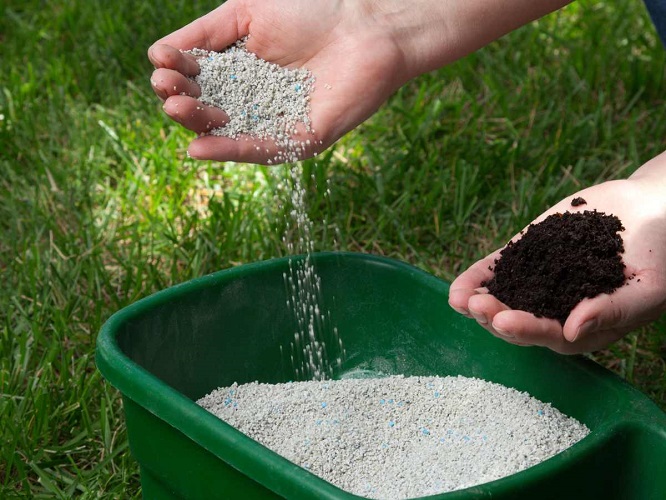
The Ways of Combining Ammonium Sulfate with Other Fertilizers
The right mix of fertilizers can improve plant performance. Ammonium sulfate is widely used in agriculture as a rich source of nitrogen and sulfur. Combining ammonium sulfate with other fertilizers can help increase both the yield and quality of agricultural products. In this article, we will explore ways to combine ammonium sulfate with other fertilizers. This will help us optimize plant nutrition and enhance the productivity of farms and gardens.
Benefits of Ammonium Sulfate in Agriculture
Ammonium sulfate is a chemical fertilizer that contains 21% nitrogen and 24% sulfur. By providing nitrogen, it helps plants grow faster and healthier. The sulfur supplied is also essential for improving the quality of crops and promoting better plant growth.
Using ammonium sulfate can enhance soil structure and increase its ability to hold water, which is especially important in areas affected by drought. Due to its acidic properties, ammonium sulfate can help lower the pH of alkaline soils, preventing problems that arise from high alkalinity.
Studies show that using ammonium sulfate adequately can increase the yield of trees and plants by 20 to 30%. This improvement is particularly noticeable in crops like wheat, corn, and rice.
Overall, ammonium sulfate serves as a versatile and cost-effective fertilizer that can be an effective tool for farmers, helping to increase their profits.
Why Should You Consider Combining Ammonium Sulfate with Other Fertilizers?
When fertilizing trees and plants, the first step is to determine the needs of the soil. If the soil requires several essential nutrients, some fertilizers can be combined. Mixing ammonium sulfate with other fertilizers can significantly improve plant performance and soil quality.
Combining ammonium sulfate with other fertilizers has several important benefits:
- Improving Soil Structure and Water Retention:
Mixing ammonium sulfate with certain fertilizers helps enhance soil structure and increase its ability to hold water. For example, using ammonium sulfate along with organic materials can boost water retention and improve soil aeration. This combination can also lower the soil pH, creating better conditions for plant growth. - Meeting Specific Plant Needs:
Each plant has its own specific nutrient requirements, including nitrogen, phosphorus, potassium, and other micro and macro elements. Combining ammonium sulfate with other fertilizers, such as potassium fertilizers, helps meet these various needs simultaneously. - Enhancing Nutrient Efficiency:
Mixing ammonium sulfate with certain fertilizers can improve nutrient absorption. For example, combining ammonium sulfate with phosphate fertilizers enhances phosphorus uptake by plants. This is especially important in nutrient-poor soils, as thoughtful fertilization can significantly address soil nutrient needs. - Reducing Fertilizer Use and Costs:
By using fertilizer combinations, farmers can reduce the amount of certain fertilizers needed, which can help minimize agricultural costs.

What are the best fertilizers to mix with ammonium sulfate?
Ammonium sulfate is a commonly used mineral fertilizer in agriculture. It contains nitrogen and sulfur, making it compatible with certain other fertilizers. Here, we will introduce the best fertilizers that can be combined with ammonium sulfate.
Nitrogen Fertilizers
One of the main components of ammonium sulfate is nitrogen. However, sometimes the soil has a high demand for nitrogen, and additional nitrogen needs to be added. In these cases, you can mix ammonium sulfate with another nitrogen fertilizer, like urea. Ammonium nitrate is another fertilizer that can be mixed with ammonium sulfate in a 1:1 ratio when needed.
Phosphate Fertilizers
Fertilizers that contain phosphorus can be effectively combined with ammonium sulfate. One of the most effective phosphorus fertilizers is super phosphate. The recommended ratio for mixing ammonium sulfate and super phosphate is 3:1. This combination can improve phosphorus absorption and enhance the quality of agricultural products. Another phosphate fertilizer that can be mixed with ammonium sulfate is triple super phosphate. Mixing triple super phosphate with ammonium sulfate can help meet the phosphorus needs of plants at various growth stages, with a suggested ratio of 2 parts ammonium sulfate to 1 part triple super phosphate (2:1 ratio).
Potassium Fertilizers
Potassium fertilizers that can be combined with ammonium sulfate include potassium chloride and potassium sulfate. Mixing potassium chloride with ammonium sulfate helps provide both nitrogen and potassium, improving fruit quality and plant resistance to environmental stress. The recommended ratio for this combination is 1:1. Mixing potassium sulfate with ammonium sulfate aims to improve soil quality and increase crop yields, with a suggested ratio of 1:1.
Micronutrient Fertilizers
Micronutrients are essential for both soil and plants. They are needed in small amounts, but even this little can significantly affect plant growth and productivity. The most important micronutrient fertilizers that can be mixed with ammonium sulfate are zinc and iron fertilizers.

Combining Ammonium Sulfate with Other Fertilizers
Combining ammonium sulfate with other fertilizers can improve plant performance and soil quality. Before you start fertilizing, it’s important to define your goals. Are you looking to increase plant yield? Improve product quality? Or enhance soil structure? Having clear goals will help you choose the right fertilizers to mix.
Once you have defined your fertilization goals, the next step is soil testing. Soil testing helps determine the pH level, nutrient content, and actual needs of the plants. Based on the test results and the rules for mixing fertilizers, you can identify the types and amounts of fertilizers needed. The choice of fertilizers should be based on the actual needs of the plants and the conditions of the soil.
After getting the test results, you can select the appropriate fertilizers and determine the mixing ratios. At this stage, you should only mix ammonium sulfate with fertilizers that are safe to combine. Depending on the plant’s needs and the chosen fertilizers, you will specify the mixing ratio. It’s important to pay attention to recommended ratios to avoid negative effects from excessive nutrient application. If you’re unsure about the mixing ratios, it’s best to consult with soil and agriculture experts.
Fertilizers, including crystal ammonium sulfate, should be prepared dry and free from moisture. If using liquid fertilizers, they should be diluted carefully. Mixing should be done evenly, which can be achieved using special mixers or by hand. Always use clean and sanitary equipment to prevent contamination.
After mixing the fertilizers, they can be applied to the soil according to a schedule. This timing is usually determined during specific growth stages of the plants. One of the best times for fertilization is early in the growing season or just before rainfall to prevent nutrient washout. Fertilizers can be added to the soil either as a surface application (solid fertilizer) or through irrigation (liquid fertilizer).
After fertilization, it’s important to monitor the growth and development of the plants. Regular monitoring helps identify any problems promptly and make necessary adjustments.

Combining Fertilizers Based on Plant Type and Our Goals
Before mixing fertilizers, it’s important to conduct a soil test to determine the actual needs of the soil and the plants. However, before that, you should clearly identify your fertilization goals. Depending on the type of plant and your objectives, the fertilizer combinations will be determined. The results from the soil test play a crucial role in this process. Once you identify soil deficiencies and the nutritional needs of the plants, you can determine the appropriate fertilizer combinations. This helps optimize the fertilizer mix and prevents waste.
Let’s look at some practical examples of fertilization goals:
- In fruit orchards, combining ammonium sulfate with nitrogen and potassium fertilizers can enhance the quality and flavor of the fruits. This mix also increases the trees’ resistance to pests and diseases.
- In rice fields, mixing ammonium sulfate with urea (for nitrogen) and super phosphate (for phosphorus) helps improve the growth and yield of rice grains. This combination enhances soil quality and increases rice plant productivity.
- In vegetable farms, mixing ammonium sulfate with organic fertilizers and potassium chloride supports better growth and freshness of vegetables. This combination improves the taste and nutritional value of the vegetables.
- In corn fields, mixing ammonium sulfate with nitrogen fertilizers (like urea) and phosphorus fertilizers (like super phosphate) boosts the growth of both fodder and grain. This combination aids in optimal nutrient absorption and improves crop performance.
- In vineyards, combining ammonium sulfate with potassium sulfate and micronutrients (like zinc and manganese) can enhance the quality, flavor, and aroma of the grapes. This mix also increases the plants’ resistance to diseases and pests.
- In canola fields, mixing ammonium sulfate with super phosphate and potassium chloride boosts seed yield and improves oil quality.
Choosing the right fertilizer combinations and managing them properly is key to successful agriculture and conserving natural resources. A farmer can determine the best fertilizer mix by utilizing the knowledge and information gained over time. If you don’t have much experience with plants or mixing fertilizers, it’s a good idea to consult an agricultural expert. Consulting with soil and agriculture specialists can help you choose the right combinations and set appropriate ratios.

